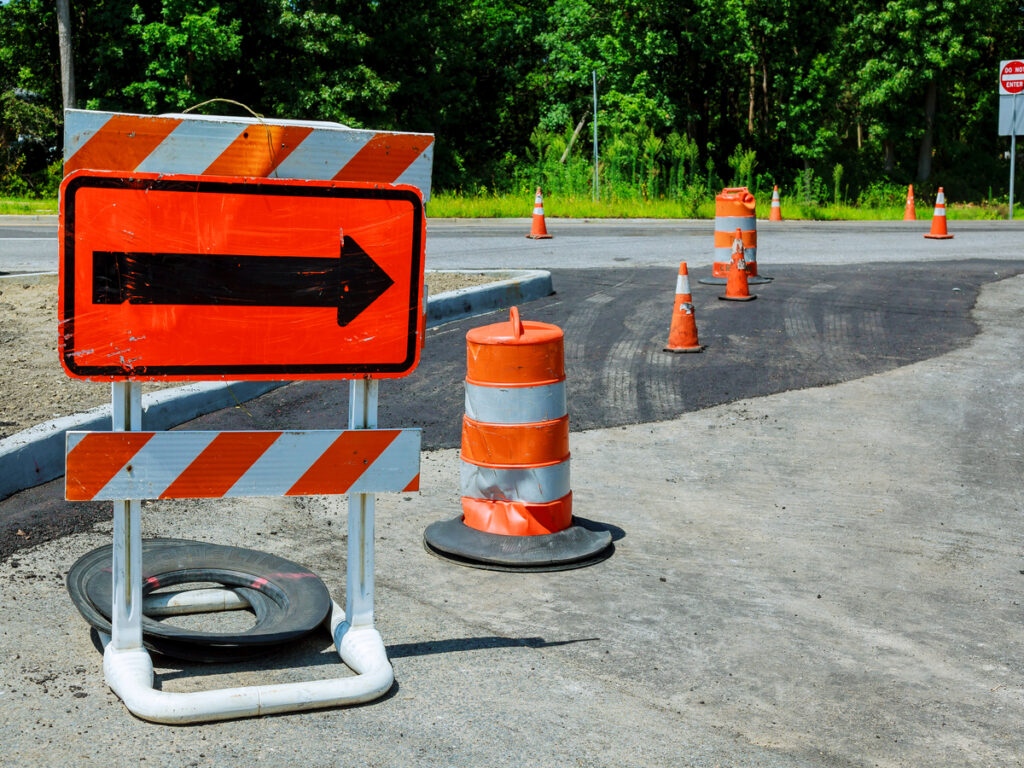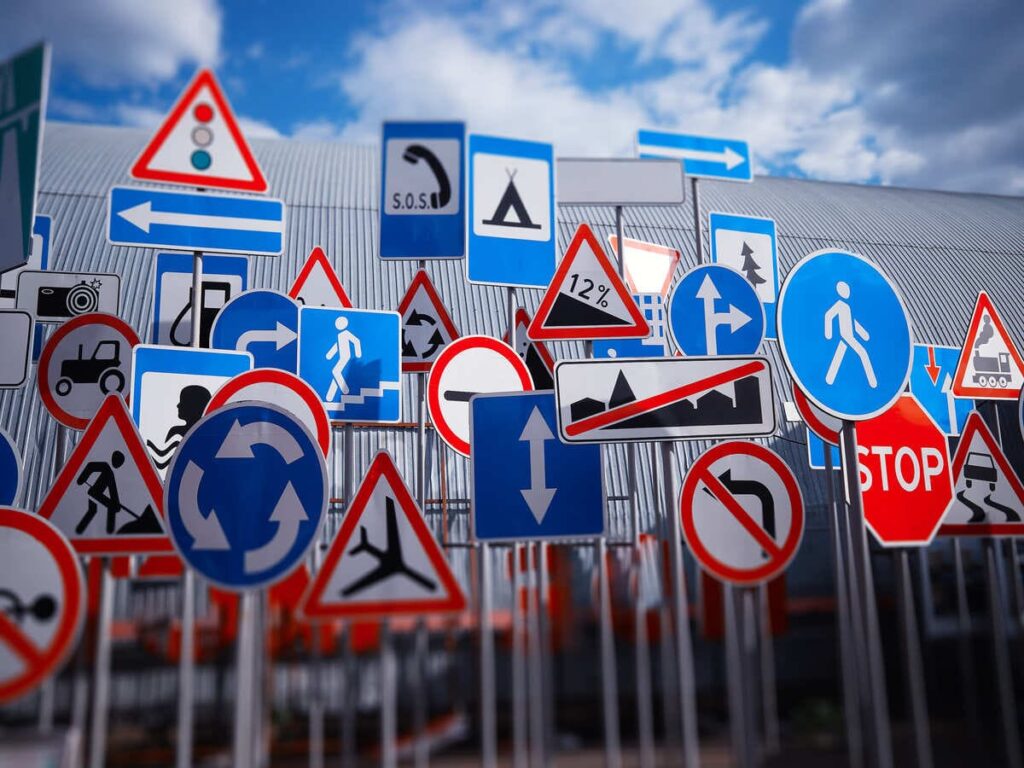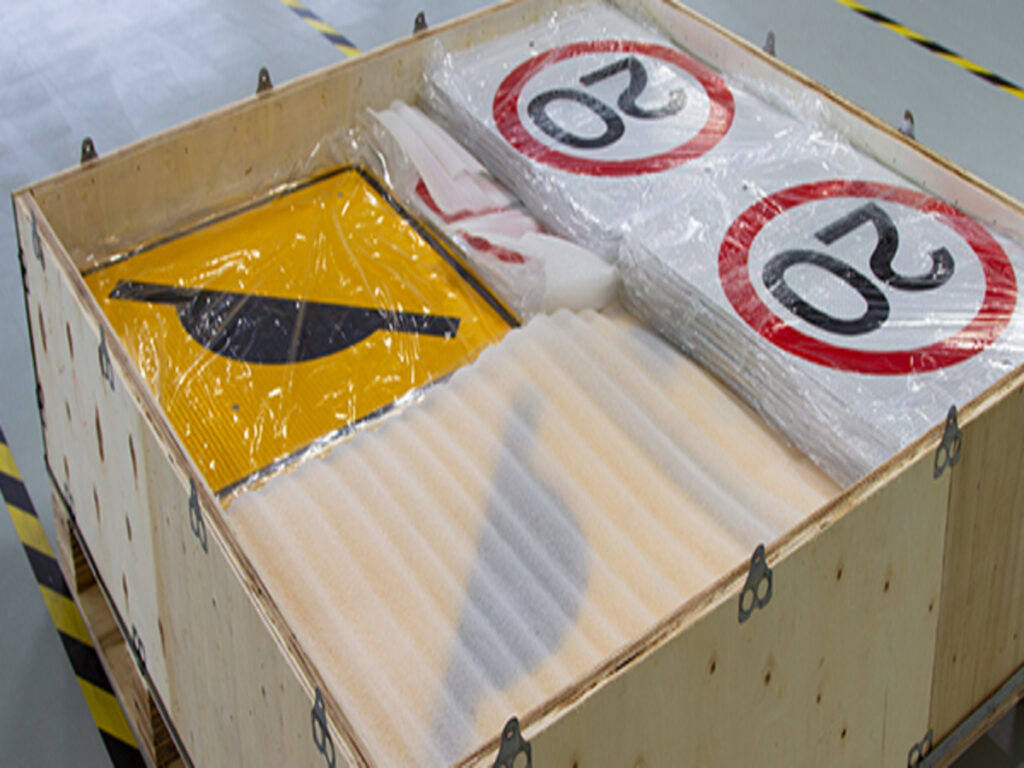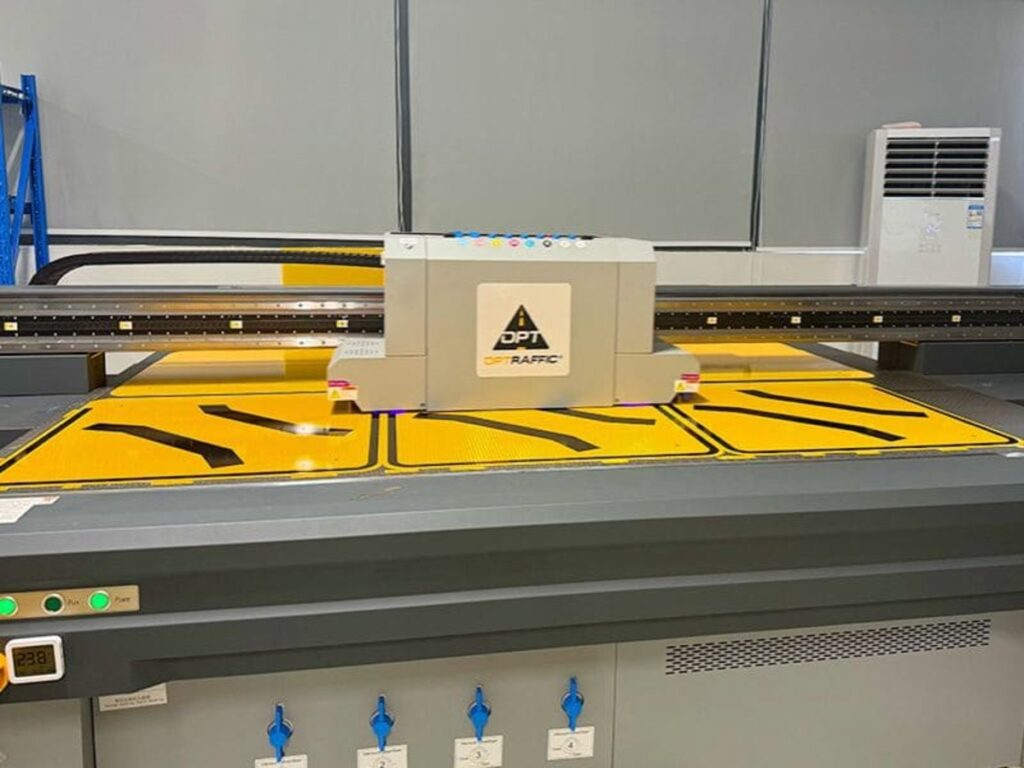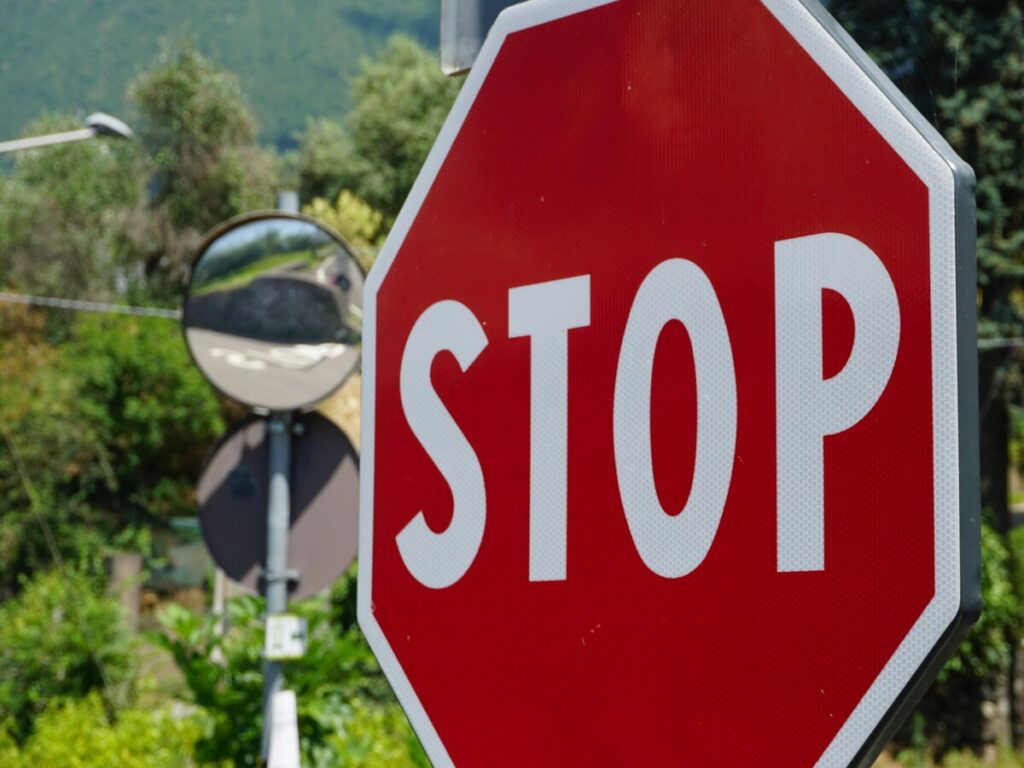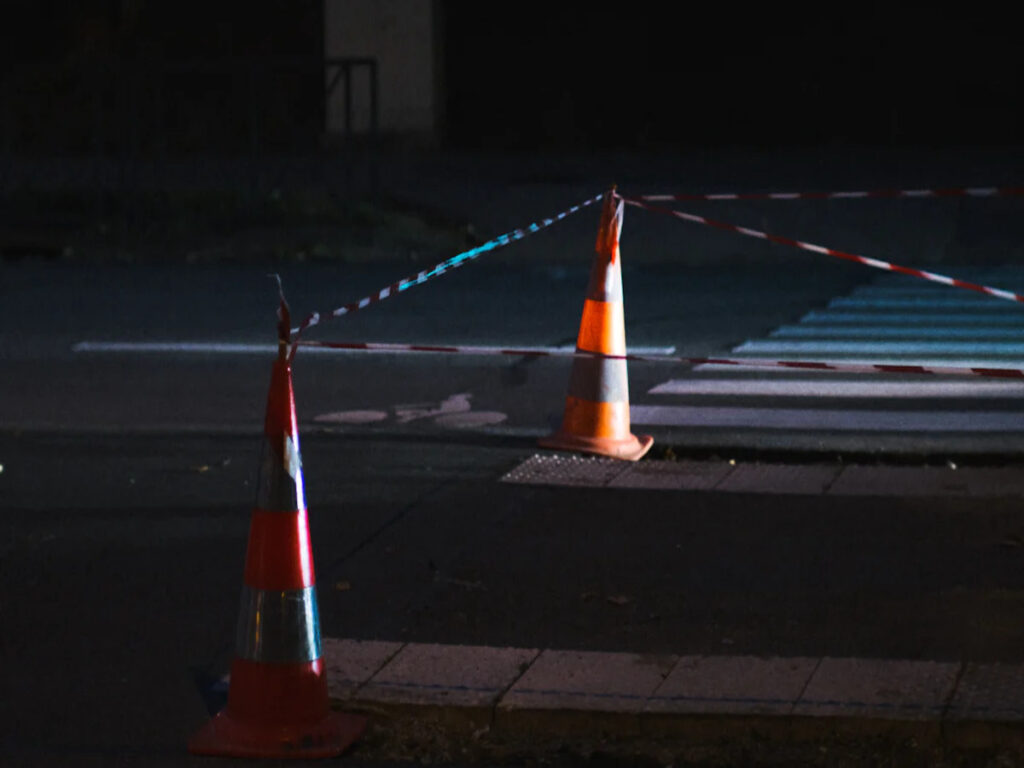
Дорожные конусы, в том числе рефлексивные конусы, играть жизненно важную роль в управлении движением, особенно в условиях низкой освещенности. Отражающие материалы повышают их видимость, обеспечение безопасности для водителей и пешеходов. Отражающие полосы обеспечивают частичное покрытие, сделать их подходящими для стандартных применений, таких как временные дорожные работы. Полное отражательное лист, с другой стороны, предлагает полное покрытие, сделать его идеальным для высоких потребностей и долгосрочного использования.
Reflective materials are also used in other traffic management tools. Например, stop signs use высокая интенсивность (HI) или diamond-grade (Текущий) sheeting for maximum visibility. Traffic drums and channelizers often feature HI or DG reflective bands to improve nighttime visibility. Barricades incorporate various levels of reflective sheeting based on traffic demands.
Choosing between reflective strips and full reflective sheeting, as well as reflective cones, depends on your specific needs. Both options improve visibility, but their applications vary based on coverage and durability.
Understanding Reflective Cones and Their Materials
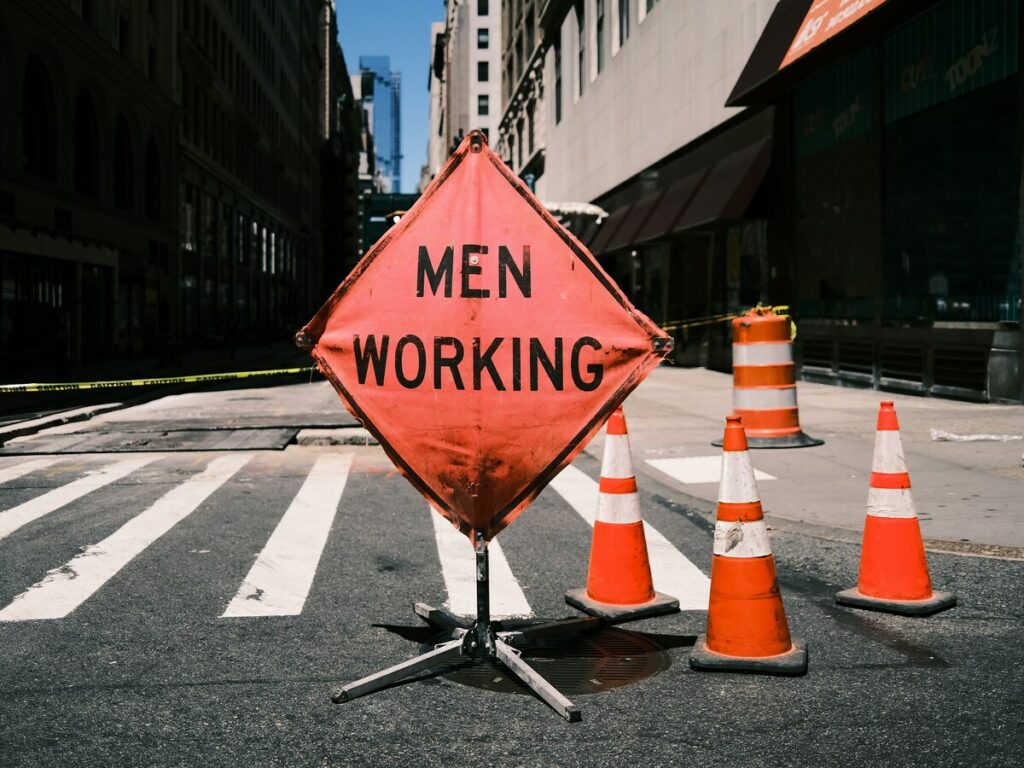
What Are Reflective Strips?
Composition and Design
Отражающие полоски are made from flexible polymer materials embedded with glass beads and pigments. These components work together to create a surface that reflects light effectively. The strips are lightweight and easy to apply, making them a practical choice for traffic cones. Common materials used in reflective strips include PVC, Финиш, и резина.
| Материал | Описание |
|---|---|
| ПВХ | Легкий вес, устойчивая к влажности и ультрафиолето, maintains bright color, often fitted with a rubber base for stability. |
| Финиш | Сильный, долговечный, Отличное воздействие, Подходит для областей с высоким трафиком, Хорошая видимость, often equipped with reflective bands. |
| Резина | Гибкий, долговечный, выдерживается, Подходит для областей с высоким трафиком, reduces injury risk in collisions. |
How They Enhance Visibility on the Road
Reflective strips improve visibility by reflecting light from vehicle headlights back toward the driver. This retro reflective surface ensures that reflective cones remain noticeable even in low-light conditions. The strips are particularly effective in urban areas where temporary traffic management is common. Their partial coverage provides sufficient visibility for standard applications without adding unnecessary weight or cost.
What Is Full Reflective Sheeting?
Composition and Design
Полное отражательное лист differs from reflective strips in its composition and coverage. It is made from PET film, Стеклянные бусинки, aluminum plating, and adhesive. Unlike reflective strips, which only cover part of the cone, reflective sheeting provides complete coverage. This ensures consistent visibility across the entire surface of the cone.
How It Enhances Visibility for Traffic Safety
The full coverage of reflective sheeting maximizes the visibility of traffic cones. Its retro reflective surface reflects light back to its source, making the reflective cones highly visible from all angles. This feature is especially beneficial in high-risk areas like highways or construction zones, where enhanced visibility can prevent accidents.
Retro Reflective Technology in Traffic Cones
How Retro Reflective Materials Work
Retro reflective technology uses materials that reflect light directly back to its source. This is achieved through microscopic glass beads or microprisms embedded in the reflective surface. When vehicle headlights hit the retro reflective surface, the light is returned to the driver, ensuring that reflective cones remain visible even in complete darkness.
Benefits for Road Safety and Nighttime Visibility
Retro reflective materials significantly improve road safety. Studies show that using retro reflective surfaces reduces accidents and fatalities. Например, а NHTSA reported that conspicuity tape on heavy trailers saved over 2,600 lives and reduced nighttime accidents by 21%. Сходным образом, reflective cones with retro reflective surfaces enhance visibility, helping drivers identify hazards from a safe distance. This technology is crucial for preventing nighttime accidents and ensuring the safety of road users.
Comparing Reflective Strips and Reflective Sheeting for Traffic Cones
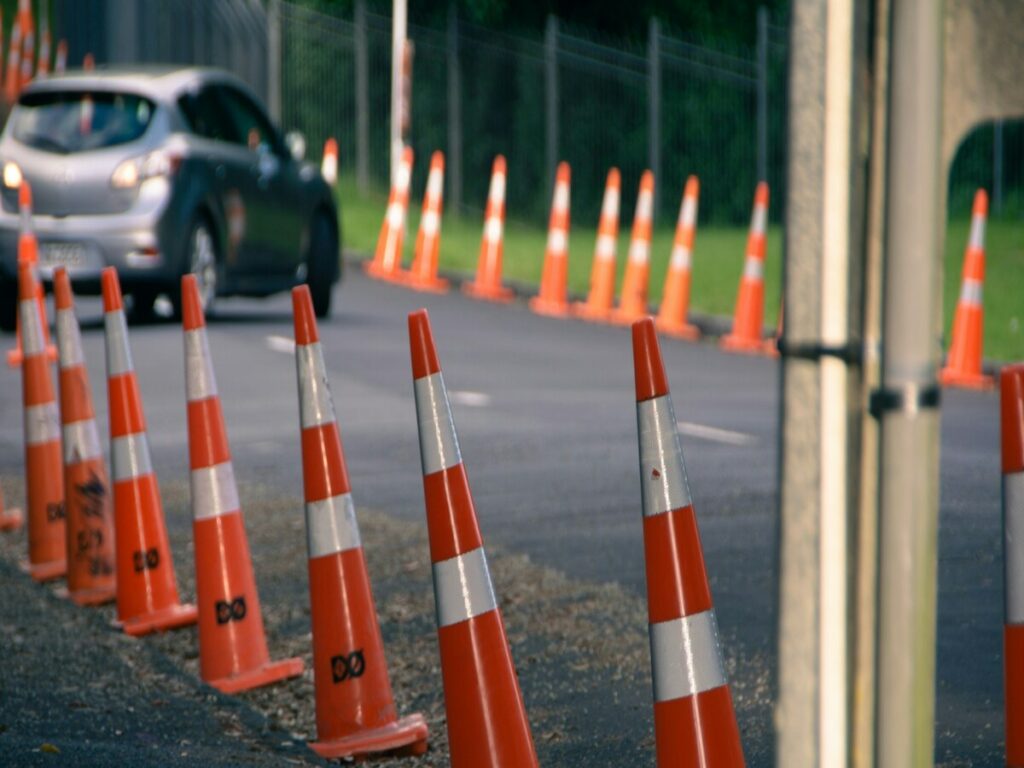
Видимость
Performance in Low-Light and Nighttime Conditions
When it comes to nighttime or low-light conditions, retro reflective materials play a crucial role in road traffic safety. Reflective strips provide adequate visibility by reflecting light from vehicle headlights. Однако, their partial coverage limits their effectiveness in certain scenarios. Полное отражательное лист, with its complete surface coverage, offers increased visibility from all angles. This makes it ideal for high-risk areas like highways or construction zones. The retro reflective surface ensures that traffic cones remain noticeable even in complete darkness, уменьшение вероятности несчастных случаев.
For enhanced safety and visibility, ОПТзнаки reflective cones are designed with high-quality reflective sheeting, providing maximum reflectivity from every angle. These reflective safety cones are built to stand out in low-light environments, ensuring that drivers can see and avoid potential hazards, even during the night or in foggy conditions. Ideal for construction sites, Управление трафиком, и аварийные зоны, Оптины рефлексивные конусы offer superior durability and performance, helping keep workers and drivers safe.
Effectiveness in Adverse Weather
Adverse weather conditions, such as rain or fog, can reduce visibility on the road. Reflective strips perform well in standard weather but may struggle in heavy rain or dense fog due to their limited coverage. Полное отражательное лист, с другой стороны, excels in these conditions. Its continuous retro reflective surface ensures that light is reflected back to drivers, even when visibility is compromised. This makes it a better choice for areas prone to harsh weather.
Долговечность
Resistance to Wear and Tear
Traffic cones face constant exposure to environmental factors like UV rays, грязь, и воздействие транспортных средств. Отражающие полоски, пока прочный, can degrade faster due to their smaller surface area and thinner material. Full reflective sheeting offers greater resistance to wear and tear. Its robust design ensures that the retro reflective properties remain intact for longer periods, Даже в районах с высоким трафиком.
Longevity in Outdoor Environments
Reflective materials degrade over time, especially when exposed to harsh outdoor conditions. Regular inspections are necessary to identify reflective safety cones with worn-out reflective tape. Полное отражательное лист, такой как 3М‘s Type XI, minimizes the frequency of replacements. This reduces material and labor costs over time. Кроме того, maintaining reflective cones involves cleaning to remove dirt and grime, which can obstruct visibility. A consistent maintenance schedule ensures that both reflective strips and full reflective sheeting remain effective.
Экономическая эффективность
Initial Cost Comparison
Reflective strips are more affordable upfront, making them a cost-effective choice for temporary or low-risk applications. Полное отражательное лист, Несмотря на то, что изначально дороже, provides superior performance and durability. This makes it a worthwhile investment for long-term or high-visibility needs.
Long-Term Value and Maintenance
The life-cycle cost analysis (LCCA) shows that full reflective sheeting reduces the need for frequent replacements. This translates to lower long-term costs for materials and labor. В некоторых случаях, full reflective sheeting can eliminate the need for external lighting, leading to additional savings on electricity and maintenance. While reflective strips require regular cleaning and inspection, full reflective sheeting offers better longevity, making it a more economical choice in the long run.
Factors to Consider When Choosing Reflective Materials
Условия окружающей среды
Урбан против. Rural Road Settings
The environment where you plan to use traffic cones plays a significant role in selecting reflective materials. Urban roads often have more ambient lighting, which means reflective strips can provide sufficient visibility. Однако, rural roads typically lack streetlights, making full reflective sheeting a better choice. The complete reflective surface ensures that reflective road cones remain visible even in pitch-dark conditions. This enhanced reflectivity reduces the risk of accidents, especially in areas with high-speed traffic.
Weather and Climate Considerations
Погодные условия also impact the performance of reflective materials. Reflective strips work well in mild climates but may lose effectiveness in heavy rain or fog. Полное отражательное лист, with its prismatic surfaces, excels in adverse weather. Its continuous reflective marking tape ensures visibility even when the road is wet or visibility is low. For regions with extreme weather, investing in durable reflective materials can enhance safety and reduce maintenance costs.
Нормативные требования
Local and Federal Traffic Safety Standards
Traffic cones must meet specific safety standards to ensure compliance. These standards dictate cone color, высота, and reflective marking requirements. Например:
| Требование | Описание |
|---|---|
| Конус Цвет | Преимущественно оранжевый |
| Минимальная высота (Дневное время) | 18 inches for low-speed, 28 inches for high-speed or nighttime |
| Retroreflectorization | Required for nighttime use; specific banding for different heights |
| Band Specifications | 6-inch white band for 28-36 дюймы, alternating stripes for over 36 дюймы |
Understanding these regulations helps you choose the right reflective materials for your reflective road cones. Adhering to these standards ensures that your reflective road cones provide optimal safety and visibility.
Industry-Specific Guidelines for Reflective Cones
Different industries may have unique requirements for reflective cones. Например:
| Требование | Подробности |
|---|---|
| Цвет | Преимущественно оранжевый |
| Высота (Дневное время, Low Speed) | Минимум 18 дюймы |
| Высота (High Speed) | 28 к 36 inches with two reflective bands |
| Reflective Band Specifications | Top band: 6 дюймы в высоту, Bottom band: 4 дюймы в высоту, 2 inches space between bands |
| Nighttime Use | Must be retroreflectorized or equipped with lighting devices |
These guidelines ensure that cones meet the specific needs of your industry while maintaining safety and visibility.
Бюджетные ограничения
Balancing Cost with Performance
Your budget often determines the type of reflective materials you can afford. Reflective strips are more affordable and suitable for temporary or low-risk applications. Полное отражательное лист, Хотя это дороже, offers superior performance and durability. This makes it a cost-effective choice for long-term use or high-risk areas.
When to Invest in Full Reflective Sheeting
Investing in full reflective sheeting makes sense when safety is a top priority. Например, in high-speed zones or areas prone to rear end collision reduction, the enhanced reflectivity of full sheeting can save lives. Its prismatic surfaces and reflective marking tape provide unmatched visibility, making it a worthwhile investment for critical applications.
Choosing between reflective strips and full reflective sheeting depends on your specific needs. Reflective strips work well for standard applications, offering cost-effective visibility during nighttime or low-light conditions. Они отражают свет от автомобильных фар, ensuring safety in urban areas. Full reflective sheeting provides superior visibility and durability, making it ideal for highways or construction zones. These reflective road cones remain effective in harsh weather and dark environments. Consider your visibility needs, условия окружающей среды, and budget to make the right choice. For extreme conditions, cones with LED lights can further enhance safety.

